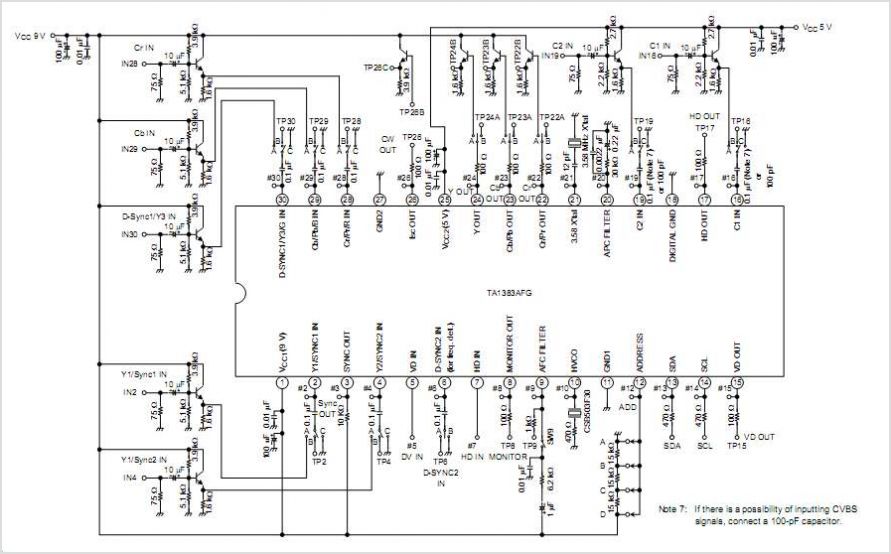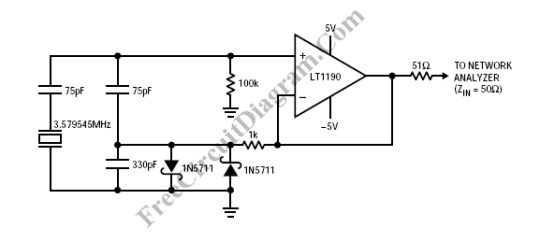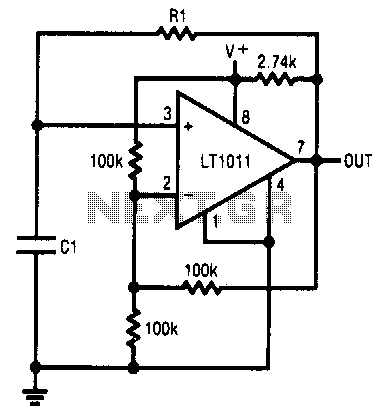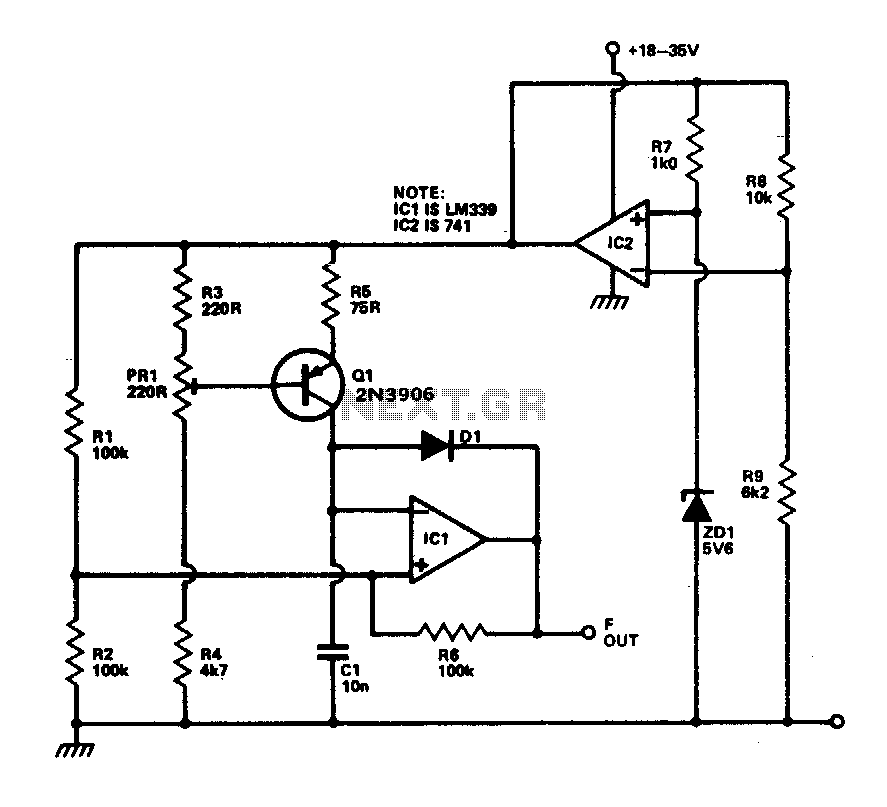
frequency doubler with 4011
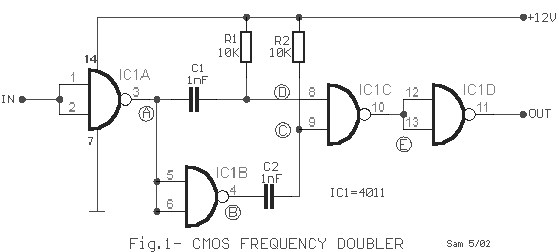
This frequency doubler utilizes a CMOS quad two-input NAND gate package, specifically the 4011 type. The core of the frequency doubler includes an inverter (IC1B) along with two differentiating networks composed of resistors (R1, R2) and capacitors (C1, C2). The NAND gates (IC1A, IC1C, and IC1D) serve as input and output buffers. Figure 2 illustrates the pulse signals at various points within the circuit.
The frequency doubler circuit operates by taking an input signal and effectively doubling its frequency through a combination of differentiation and logic gate operations. The inverter (IC1B) plays a crucial role in inverting the incoming signal, which is then processed by the differentiating networks (R1/C1 and R2/C2). These networks are designed to convert the input square wave signal into a series of narrow pulses, thereby facilitating the frequency doubling process.
The NAND gates (IC1A, IC1C, and IC1D) are configured to buffer the signals at various stages of the circuit. IC1A receives the differentiated signal from the networks, while IC1C and IC1D serve to further process the output, ensuring that the signal integrity is maintained throughout the frequency doubling operation. The output of the circuit will exhibit a frequency that is twice that of the input signal, with the pulse widths determined by the values of the resistors and capacitors in the differentiating networks.
This configuration allows for a robust and efficient frequency doubling mechanism suitable for various applications in signal processing and communications. The schematic representation of the circuit, as shown in Figure 2, provides a visual understanding of the signal flow and interactions between the components, highlighting the critical role each part plays in achieving the desired frequency output.This frequency doubler uses one CMOS quad, two input NAND gate package type 4011. The frequency doubler proper consists of an inverter IC1B, two differentiating networks R1/C1, R2/C2 and NAND gate IC1A, IC1C and IC1D function as input and output buffers. In Fig. 2 exist the pulses in different points of circuit. 🔗 External reference
The frequency doubler circuit operates by taking an input signal and effectively doubling its frequency through a combination of differentiation and logic gate operations. The inverter (IC1B) plays a crucial role in inverting the incoming signal, which is then processed by the differentiating networks (R1/C1 and R2/C2). These networks are designed to convert the input square wave signal into a series of narrow pulses, thereby facilitating the frequency doubling process.
The NAND gates (IC1A, IC1C, and IC1D) are configured to buffer the signals at various stages of the circuit. IC1A receives the differentiated signal from the networks, while IC1C and IC1D serve to further process the output, ensuring that the signal integrity is maintained throughout the frequency doubling operation. The output of the circuit will exhibit a frequency that is twice that of the input signal, with the pulse widths determined by the values of the resistors and capacitors in the differentiating networks.
This configuration allows for a robust and efficient frequency doubling mechanism suitable for various applications in signal processing and communications. The schematic representation of the circuit, as shown in Figure 2, provides a visual understanding of the signal flow and interactions between the components, highlighting the critical role each part plays in achieving the desired frequency output.This frequency doubler uses one CMOS quad, two input NAND gate package type 4011. The frequency doubler proper consists of an inverter IC1B, two differentiating networks R1/C1, R2/C2 and NAND gate IC1A, IC1C and IC1D function as input and output buffers. In Fig. 2 exist the pulses in different points of circuit. 🔗 External reference
